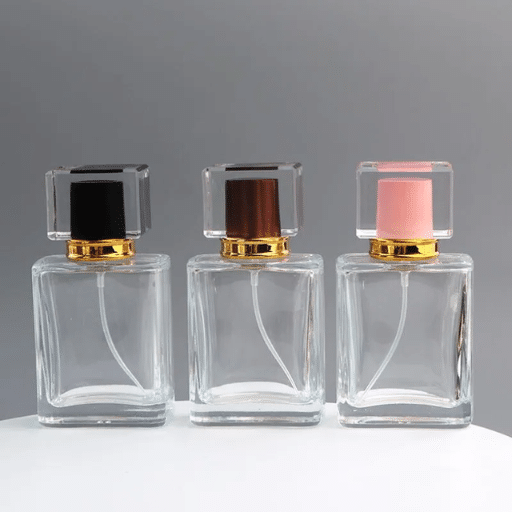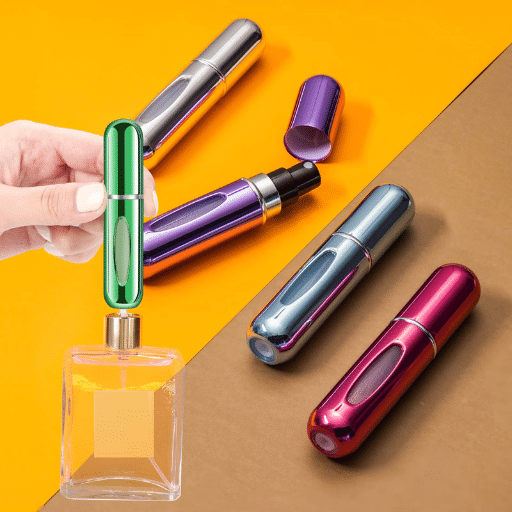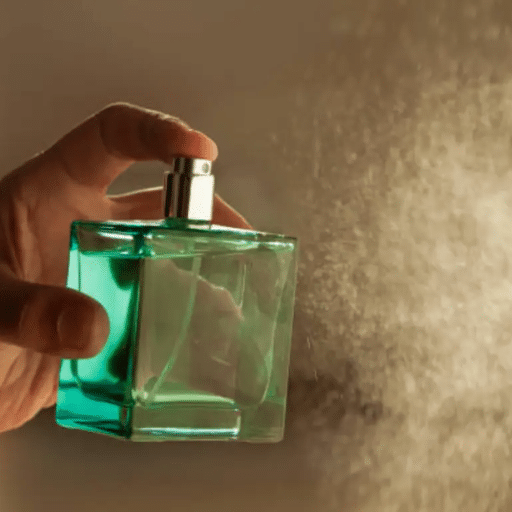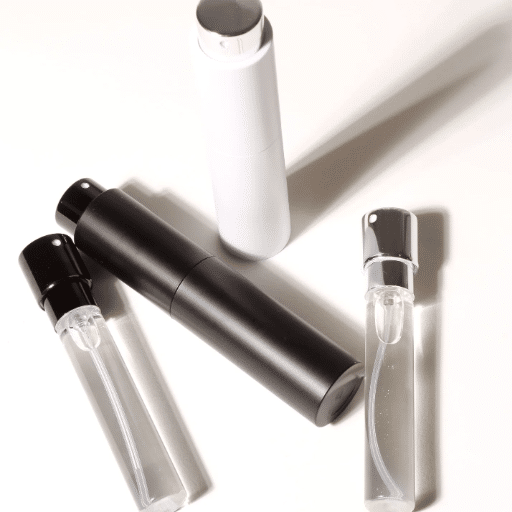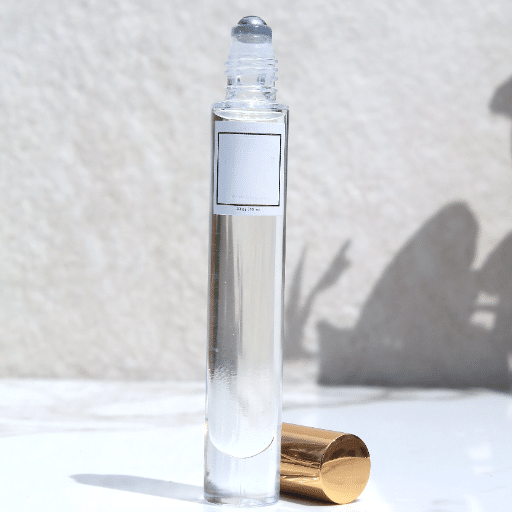Identifying suitable perfume packaging has given rise to a heated discussion of plastic vs glass bottles among customers and producers. Each selection has its own advantages and disadvantages, such as sturdiness and efficiency relative to cost, as well as a brand’s aesthetic value and how the packaging impacts the environment. This blog attempts to unravel which of the two choices best strips housing fine fragrances of its housing élan. In particular, it investigates the myriad concerns surrounding the formulation of synthetic perfume compositions while threading plastic and glass bottles with tri-marginally elegant compartments. Thus, if you are a brand owner or a green consumer, you stand to gain immensely in regard to explaining divergences stemming from eco-conscious design as well as packaging construction from this piece featuring materials’ multifaceted impacts in the boundaries called sustainability and user experience.
What are the different types of perfume bottles?
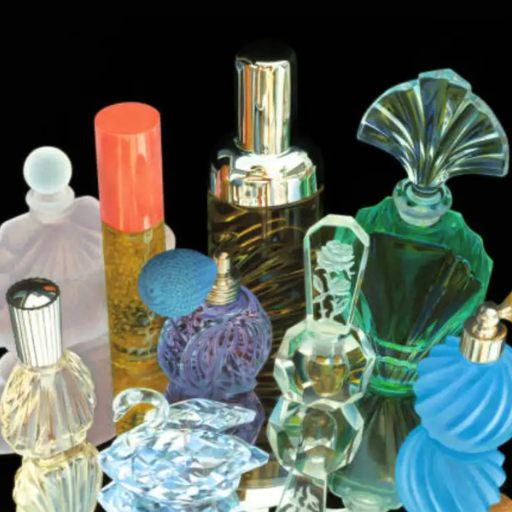
This market can deem to have numerous classes of perfume bottles including:
- Glass Bottles – These remain the most conventional and well-accepted perfume packaging because the artistic aspect is not detrimental to glazing the fragrance’s quality. Basically, they are glassy, can be recycled, and beautiful.
- Plastic Bottles – Being light and strong, plastic bottles make an economical choice for portable perfumes. Nonetheless, these latter lacks the glazing quality derived from glass containers.
- Rollerball Bottles – These are handheld and compact for personal use, ideal for carrying on the go. Perfect for accurately applying personal and travel-sized fragrances.
- Spray Bottles – The most popular fragrance dispensing method, spray bottles enable even coverage and are easy to use daily.
- Refillable Bottles – These eco-conscious bottles are designed to be reused, reducing waste and supporting sustainable practices.
Each type has distinct advantages based on the intended use and audience.
Understanding different types of perfume bottles
Perfume packaging makes use of diverse materials, each selected based on their attributes, aesthetics and practical utility. Glass is still preferred due to its non-reactive substance and transparency which preserves the scent. Premier glass bottles are usually decorated with beautiful details which further augment the value of the product. Another common option, especially for budget and travel-size items, are lightweight and durable plastics. To foster sustainability, recycled plastic has recently been becoming more popular due to innovative technologies.
For high-end perfumes, crystal bottles are symbolic of elegance and exclusivity with some pieces handcrafted into unique sculptures. Spray and roll-on parts are often made from more durable, sleek metals like aluminum. Biodegradable polymers and sustainable wood are alternative eco-friendly lightweight materials companies are increasingly becoming bolder to experiment with. As per industry research, the volume of the fragrance industry is rapidly increasing with a projected CAGR of more than 5% by 2030 spearheaded by consumers’ demand for eco-friendly and cutting-edge features.
Exploring materials used in perfume bottles
Scent bottles are made from different materials. Each material is picked carefully based on factors like appearance, longevity, and environmental impact. Here is an outline of some common materials that make perfume bottles:
- Glass
- Glass is still the most popular material for fragrance containers because it is strong, preserves the scent, and is posses clarity.Many luxury brands prefer glass due to its elegant look and its ability to be recycled.Around 70 to 80 percent market share of glass bottles is perfume packaging.
- Plastic
- Blended with PET(Polyethylene Terephthalate) and PP (Polypropylene), fragrances aimed for the mass or travel markets may use plastic. They are inexpensive and lightweight.Research into biodegradable plastics is helping improve their overall sustainability.
- Metal
- Aluminum and stainless steel are the prevalent materials for spray head and cap components, as well as full bottle constructions.Leakage resistance, structural integrity, and good visuals are the benefits met with their use.
- Ceramic
- Used more often for niche artistic perfume bottles, ceramics are less common as a whole.They are highly customizable for artisanal products and possess a soft matte surface.
- Wood
- Wood is now used as caps or design elements on perfume bottles since it is eco-friendly and sustainable.To attract greener consumers, companies are paying more attention to using wood that is FSC-certified.
- Biodegradable Polymers
- These materials are more prevalent in the market as companies strive to mitigate their carbon footprint.They are mainly utilized for prototypes and special edition packaging.
In the design and creation of perfume bottles, choosing for the right material is essential, as each component has an important influence on the functionality, design and ecological impact of the bottle itself.
Comparing glass or plastic bottles for perfumes
When determining whether to use glass or plastic bottles for a perfume product, factors like sustainability, aesthetics, cost, and durability must be taken into account.
1. Sustainability
Leaving aside the strategy for the used bottle collection, the sustainability of any used model must be verified by looking to the materials it discomposes of. In this aspect glass wins as it can be produced of clean materials such as sand, limestone, and soda ash. It can be reused unlimitedly without loss of quality. Some estimates have been done globally and the estimated recycling rate for glass is around 33% and higher in some countries. While some guessworks appreciate plastic for its reusability, being composed of PET, it is really a one for every five used, since the composition loses quality every single time. In contrast, the glass industry whacks more CO2 in the sky while in usage, but the overall impact of glass tends to lower over time.
2. Aesthetic Appeal
This material makes perfume bottles appear more beautiful to the eye and touch, with greater value when compared to other ones. Glass is often elaborate in shape, nigh on weightless meaning it can easily transformed into soft molds, much heavier, clearer enabling it to be alluring, and repealing one from tampering with them. Surely engaging and astonishing casts. Meanwhile, handy and travel-friendly products use PES plastic which enables greater flexibility and colours at the expense of being lightweight and as cue pieces for equipment.
3. Strength and Convenience
Due to their lightweight and resistance to shattering, plastic bottles are more durable and portable. Companies producing perfumes aimed at younger consumers, or those offering travel-size products, often use plastic for convenience. While glass is more fragile, it does not chemically react with the liquid inside, meaning the perfume will not change over time. This is particularly useful for preserving complex formulas and luxury scents.
4. Economic Considerations
The lightweight nature of plastic bottles makes them easier to produce, as well as transport when compared to their glass counterparts. Still, brands focusing on a more upper-scale clientele may choose glass instead, even with the increase in cost, due to the quality association attached to it.
5. Market Trends
The drive from the sustainability movement and eco-conscious consumers has resulted in the shift towards glass bottles, as they are seen to be more environmentally friendly. At the same time, innovation in bioplastics and recycled PET plastics is closing the gap by providing eco-friendly plastic packaging solutions. Brands are finding ways to combine the functionality of plastic with contemporary technology to reduce their carbon footprint while meeting consumer demands.
Why choose glass perfume bottles?
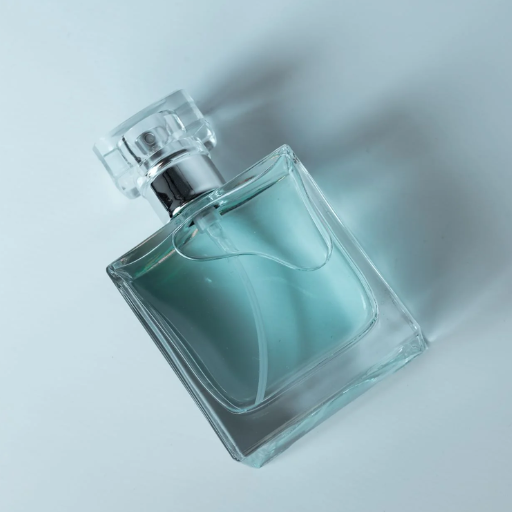
Perfumes made in glass bottles are more ideal than those issued in plastic because they maintain aroma unmatched. This is because glass is nonporous and inert and doesn’t interact with chemicals, maintaining the original scent. The mesmerizing allure of glass bottles makes the product immediately catchy, adding to its value which serves a greater purpose than mere functionality. Softened by these sustainable pillars, their recyclable nature also embraces environmental considerations while striking a balance between form, function, and eco-responsibility.
Benefits of glass packaging in the perfume industry
- Enhanced Durability and Preservation
Carried in glass packaging, the perfume’s enhanced durability and preservation is unrivaled. Constantly exposed to air, moisture, or temperature changes, the glass’s impermeable and non-reactive seal serves as a perfect barrier, keeping everything contained within, meaning the inhaled fragrance composition would remain steady for a significant period something ideal considering the modern standards of perfume. About 60% of luxury perfume brands are shifting to glass packaging, attesting its unparalleled ability to keep perfume from degradation and retain its value.
- Sustainability and Eco-Friendliness
The capacitor industry can capitalize on glass’ recyclability. Glass can be recycled infinitely, unlike plastics whose quality degrades with every cycle. Research shows that 75% of glass packaging is recycled in numerous countries, furthering its positive impacts on the environment. In addition, using recycled glass in new glass production is more efficient. Eco-efficiency is glass and environment-friendly since it uses 40% less energy than manufacturing brand new glass.
- Premium Aesthetic Appeal
In the perfume industry, consumer experience is elevated by the aesthetic attributes of glass. The transparency of glass adds an element of trust which allows the consumer to directly check the product being advertised and boosts confidence in the purchase assertion. Market research shows that over 80% of consumers are concerned with the packaging design of perfumes, which is often typical with luxury brands. Glass also allows brands to be engraved, sculpted, or coated, which ensures that the products are remembered even when competing brands flood the market.
- Consumer Confidence and Safety
Customers are now paying attention to how products are packaged. The beauty product industry has shifted to glass packaging because it is perceived as healthier and more environmentally friendly. With both brand names and high-end products utilizing glass, this trend seems to be here to stay. In addition to environmentally-friendly branding and chemical-free packaging, glass assures that the fragrance does not change over time. The seal between the liquid and the surrounding environment is airtight, preventing leakage or evaporation. Now, glass bottles of perfume provide assurance not only for authenticity but also safety, since glass does not contain BPA and its’ fragments will not pollute the fragrance.
How glass material enhances perfume longevity
Perfumes are protected the most when stored in glass containers because of the non-porous and chemically stable nature of glass. Unlike plastic which could attack the fragile fragrance blends and decompose them, the glass acts as a inert barrier against any changes to the perfume over time. Studies suggest that glass bottles do a good job of guarding perfumes from air, moisture, and even temperature shifts. For instance, UV-protected glass enhances durability by preventing exposure to sunlight which can break down the perfume’s chemical structure and weaken the scent or “volatile” scent.
Glass also has superb oxidation airtight sealable properties. Canned air could lead to changes in the profile of a fragrance, reducing intensity. Data from the fragrance industry highlights that perfumes in glass containers lose their original scent profiles to a lesser extent than other packaging types. The demand for long-lasting and authentic products deem the use of fine glass a mark of distinction in superior perfume elegance packages.
Popular perfume brands using glass bottles
- Chanel
Chanel is well-known for the glass bottle design of Chanel No. 5, as it symbolizes luxury and sophistication. Their minimalist and classy glass design adds class and preserves the fragrance.” Reports suggest that Chanel still controls the market for luxury perfumes, and the framed glass bottles of Chanel perfumes attract a lot of consumers.
- Dior
Dior perfums, like Miss Dior and J’adore, is encased in intricately designed glass, epitomizing Parisian culture. The perfume maker focuses on quality by using high-quality glass which will preserve the purity and lifespan of the scents. Their use of logos and engraved stoppers as well as ornate stoppers adds to the premium feel, contributing to their global recognition as a top-selling perfume maker.
- Jo Malone
Jo Malone is known for it’s uncomplicated, tidy branding and glass that ensures the freshness of scents such as Lime Basil & Mandarin and Peony & Blush Suede. Its plain glass highlights the understated elegance jo malone has which customers looking for minimalistic luxuries have come to love.
- Tom Ford
Tom Ford’s perfumes like Black Orchid and Tobacco Vanille come in unique glasses bottles that are striking and elegant. The darker glass designs of the brand are a trademark, both for their protective function shielding the perfume from light exposure to maintain quality and striking aesthetic appeal.
- Guerlain
Guerlain fragrances like Shalimar and Mon Guerlain have innovative artistic glass bottles—merited throughout the brand’s rich heritage—often laden with complex motifs and unique contours. Their dedication to the use of quality glass ensures preservation of fragrance and architectural beauty earning them a position among leaders in high-end packaging.
These brands emphasize the importance of glass bottles as part of the premium perfume pack. They not only provide protection and increase the longevity of the fragrance but also extend the brand identity with design—combining practicality and sculpture.
What are the advantages of plastic perfume bottles?
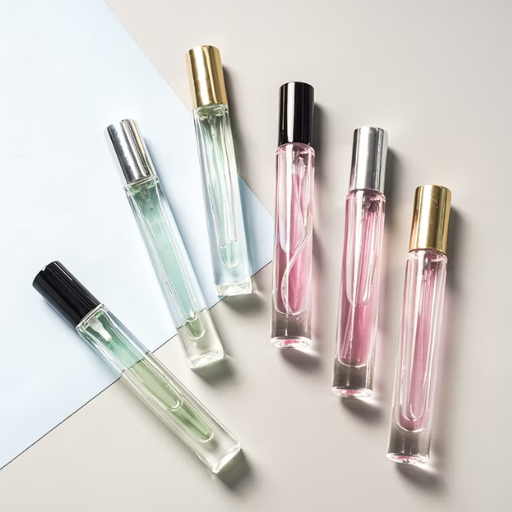
Using plastic perfume bottles has certain benefits that make the choice practical:
- Lightweight: Compared to glass, plastic perfume bottles are considerably lighter. This makes them easier to carry during travel.
- Durability: Unlike glass, impacted plastic is much more resistant to wear and tear, and therefore has a much lower risk of breakage.
- Cost-Effective: Since the production costs of plastic bottles is cheaper than their glass counterparts, the prices are also lower, providing more options to consumers.
- Versatility: They can be molded into a variety of different shapes and designs, which makes them great for branding and packaging.
These advantages make plastic perfume bottles economical for consumers and adaptable for manufacturers.
Cost-effectiveness of plastic packaging
Cost-effectiveness acrylic plastic items are easy to produce and require simple manufacturing. The materials also have low prices and can be obtained easily. When compared to glass products, plastic is far more cost-effective and requires lower quantities for mass production. Due to the strength of these items, the rate at which new replacements are required is drastically lower, boosting appeal to both buyers and sellers.
Durability and safety of plastic bottles
The ruggedness of plastic bottles is especially well-known because they withstand breakage or deformation under various conditions. Impact-resistant PET (polyethylene terephthalate) or HDPE (high-density polyethylene) used in manufacturing these bottles mitigates damage occurring during transport or storage. The strength of these plastic materials minimizes product loss and makes them ideal for packaging liquids, including water, soft drinks, or even household cleaning products.
Many manufacturers also ensure the health and safety of consumers by clinically testing their plastic bottles. PET plastic, for example, is known to safe for food and beverage storage as PER approved by the FDA. New technologies also deal with bisphenol a (BPA) concerns by including forms of BPA-free plastics in their bottles. Research indicates that properly recycled or disposed plastic bottles sustainably mitigate environmental and safety risks by making them a preferred choice when managed effectively. Statistics show PET plastic bottles are collected for recycling more than other types of plastic waste with over 60% in some areas which aids to waste reduction and resource efficiency. Their combination of strength and safety gives diverse industries the confidence to rely plastic bottles packaging solutions.
Innovations in plastic perfume bottles
The perfume sector is changing significantly, led by innovations like sustainable and multifunctional plastic perfume bottles. The industry seems to be progressing with the introduction of bottles made from recycled PET (rPET), a material which reduces emissions as it decreases dependence on virgin plastics. Industry reports suggest that utilizing rPET in packaging has the potential to cut greenhouse gas emissions by up to 50% compared to the traditional method of manufacturing plastics.
Another form of innovation that is gaining acceptance is the lightweight “green” plastics. These plastics practically imitate traditional forms of plastic, but unlike conventional plastics, these have low decomposition time, which helps the environment in the long term. Some companies are taking the extra step to decrease environmental dependence by using plant-based plastics made from renewable resources such as sugarcane.
Besides the refillable plastic bottles that are encouraging the sponsors to shift from single-use to reusable packaging, thus altering consumer behavior and habits, refillable systems can help aid perfume waste reduction by up to 70% according to studies. Also, new advancements in the design of the bottles, for instance, airless pumps, ensure that high product preservation and sleek upscale aesthetics go hand-in-hand. All these new changes help maintain the fragrance industry’s balance of luxury and function.
These changes illustrate the dedication to quality and design within the fragrance industry kept while strategically carving a path toward eco-friendly packaging solutions.
How does bottle design impact perfume choice?

The design of a perfume bottle greatly impacts the purchasing decisions of customers. A well-made and attractive bottle garners attention and, most importantly, creates a lasting first impression—an essential in today’s highly competitive market. The design embodies characteristics of the fragrance, such as its elegance, freshness, or boldness, which helps consumers identify the scent with a particular emotion or lifestyle. Furthermore, the ease of use and practicality of the bottle can positively influence purchase decisions as it meets the expectations of consumers.
The role of perfume bottle design in consumer attraction
The design of a perfume bottle is often a consumer’s first point of contact with the product. It serves, at times, as a marketer, selling products right off the shelf. Research suggests that nearly 60% of people make their buying choices solely based on the visual presentation, further proving the necessity of an attractive. Innovations in contemporary packaging focus on the incorporation of environmentally friendly materials, lavish accents such as matte glass and metals, and striking designs that reflect current trends.
For example, straightforward stubby designs appeal to the younger population while older generations prefer more complicated and extravagant bottles. Statistics also show that environmentally savvy consumers would now prefer a brand that uses eco-friendly design considerations such as biodegradable packaging or refillable containers. This change calls for brands to not only pay attention to beauty issues but also embrace eco-friendly practices to meet changing consumers’ expectations. Thoughtfully designed beauty products can enhance market impact when combined with emotional appeal and elegant eco-responsibility.
Trends in custom perfume bottle designs
An increase in innovations, personalization, and sustainability are being reflected by the current market trends of custom perfume bottles. An example would be the rise of Minimalism – a movement that focuses on simple clean lines and shapes alongside understated elegance. To appeal to eco-friendly consumers, these types of bottles are made using glass and aluminum since they are recyclable. According to market research, over 60% of consumers prefer eco-friendly packaging when choosing fragrances, indicating that sustainability has become a major factor.
Another emerging trend is personalization where brands allow consumers to engrave their names to the bottles freeing up opportunities to select custom colors and finishes. Luxury brands are adopting this trend to provide bespoke experiences tailored to clients’ preferences.
These days, advanced technology is also assisting with more refined designs of perfume bottles. Printers and modern molding methods allow for intricate novel shapes to be constructed, some of which were once thought impossible. Consumers regard these avant-garde designs as captivating, which tell a brand’s story. 45% of customers in a recent survey noted that unique packaging is important in their purchase decisions demonstrating the power of differentiation through design.
Also, refillable perfume bottles are gaining traction in parallel with the sustainability movement. From a business perspective, brands not only reduce waste by allowing consumers to refill their bottles but also cultivate lasting relationships with their customers. All of these trends emphasize an intertwining of creativity, custom design, function, purpose, and sustainability in custom perfume bottle design.
Which is best for perfume bottles: glass or plastic?
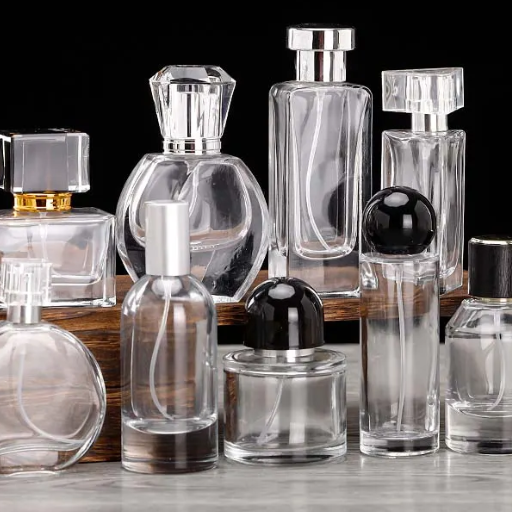
When it comes to perfume bottles, glass is favored over other materials. This is because glass is non-reactive and keeps the perfume’s integrity. Easily appealing to consumers, glass also speaks of elegance and sophistication. Plastic containers, on the other hand, are lightweight and harder to break. However, they are prone to altering the smell and absorbing it, which also makes them less suitable. As such, glass is favored for packaging perfumes because of its unrivaled beauty and functionality.
Factors influencing the choice between glass and plastic
1. Safety and Protection
One pro of glass is elegance, while one con is its fragility and danger of breaking. If you drop glass in certain environments, it can pose a danger to everyone aya repRang-ga by this enjoy whin. The opposite is true for plastic. Everything about it has superb resistance to cracking and making it to safe to handle. Furthermore, modern manufacturing of impact-resistant plastics has increased their toughness over the years making them suited for use across all industries.
2. Environmental Impact
Environmental factors give glass a distinct advantage over plastic as glass is fully recyclable and can be reused perpetually without any degradation in quality. On the contrary, glass’s manufacturing and recycling processes require an enormous expenditure of energy, resulting in a greater carbon footprint than that of plastic. The lightweight nature of plastic does simplify production and requires considerably less energy, however, plastic’s long-term decomposition and microplastics wreak environmental havoc on a different scale. While some businesses are striving to find a solution with biodegradable plastic, it is yet to be widely adopted.
3. Cost Efficiency
Cost plays a balancing act that weighs not only on the production of the item but also the raw materials and expense incurred regarding packaging; all driving the expense incurred when adopting glass. As a result, shipping and production of glass becomes more onerous along with an increase in business costs when dealing with the transport of glass which entails greater packaging expenses due to the fragile nature of the content. Comparatively, the lightweight and efficient nature of plastic means lower production expenses along with improved ease in the transport and storage of goods, making plastic the optimal answer for economically minded businesses.
4. Aesthetic and buyer psychology
The attractiveness of glass captivates consumers as it unequivocally represents quality and elegance, especially for beauty products, perfumes, and select drinks. Studies show that a significant number of consumers perceive glass packaging to be associated with higher-value products, thus impacting their purchasing behavior. While plastic is flexible and comes in many shapes, it can at times ipso facto result in cheaper perception, especially for luxury items. However, the industrial design and finishing of plastic has considerably improved.
5. Basic needs and particular uses
Specific applications distinctly affect the choice of materials. For example, glass works well in the food and drink sector because it is impermeable to chemicals and gases, prolonging the shelf life and preserving the taste. On the other hand, plastic is favorable in situations that require flexibility, lightweight, and resistance to possible breakage such as travel-size products or industrial packaging.
Considering all these factors, such as the risk of damage, eco-friendliness, expenses, reputation, needs of the customers, and practicality, a company can effectively align its predicted goals and demands.
Environmental considerations of glass or plastic
Both glass and plastic have specific environmental concerns that require specific attention. Plastic has its roots in petroleum or natural gas, and sand and limestone is used to create glass. Glass products are fully recyclable and don’t lose any of their original quality as long as they are efficiently recycled. But there are looming issues with pure glass products; making glass is rather energy intensive as its alchemy needs extreme heat which in turn reduces the quality of carbon dioxide emissions. For example, the International Journal of Greenhouse Gas Control claims that approximately 400 kilograms of carbon dioxide per ton of put-out glass is emitted. Integrating renewable sources of energy into a glass framework is the need of the hour.
Despite boasting lighter mass than glass, it is clear that the bulk of plastic’s environmental impact comes from the horrid mismanagement of plastic waste. As claimed by NPR, a staggering 8 million tons of waste-sourced plastic conglomerates into our oceans each year having disastrous effects on sea life and ecosystems as a whole. Plastic does have its benefits in that its lightweight nature reduces fuel emissions, but the flipside of that coin is that poor logistical paths for incompatible products pose risks to microplastic commodity growth. Once in natural settings, plastic degrades into microplastics which will forever be a detrimental curse for earth’s animals and humans alike.
Recycling policies need to balance both glass and plastic materials, and for both, infrastructure must be enhanced. In some areas, glass recycling surpasses 70%, but globally, plastic recycling is still behind at under 10%. Businesses, waste, and consumers need to work together to improve the management systems for waste, limit the use of plastic products, and embrace a circular economy for both glass and plastic items.
Concluding which is best for perfume bottles
In my perception, the glass versus plastic debate when it comes to perfume bottles depends on the owner and brand’s emphasis the most. If their priorities are on sustainability and luxury, glass is preferable owing to its recyclability and high-end look. But then, if the priorities are lower cost, lightweight ease, and durability, then plastic becomes feasible. In the end, striking a balance between environmental impact, appeal, and practicality determines the best option.
Reference Sources
I found some studies related to the topic of packaging materials for perfumes, but none directly compare plastic and glass bottles for perfumes. Here are the highlights:
-
Beauty mask: Market and environment:
- Discusses the environmental impact of plastic packaging, including bottles.
- Highlights the widespread use of plastic in packaging but does not focus specifically on perfumes.
-
Migration Studies and Endocrine Disrupting Activities: Chemical Safety of Cosmetic Plastic Packaging:
- Examines the chemical safety of plastic packaging for cosmetics.
- Suggests that glass containers are often used to prevent chemical migration, which could imply benefits for perfume storage.
-
Cross-cultural Study for Packaging Design of Luxury Perfume:
- Focuses on the design and cultural aspects of luxury perfume packaging.
- Does not delve into material comparisons but emphasizes the importance of packaging in brand perception.
If you’d like, I can refine the search further or explore specific aspects of packaging materials for perfumes. Let me know!
Frequently Asked Questions (FAQs)
Q: What factors influence the choice of material for perfume bottles?
A: The choice of material for perfume bottles is influenced by factors such as the preservation of fragrance, aesthetic appeal, and cost. Glass bottles are often chosen for their non-reactive properties, while materials like ceramic and metal can offer unique designs. The evolution of perfume packaging also plays a role, with modern trends favoring materials that enhance both functionality and style.
Q: How do glass containers benefit perfume packaging?
A: Glass containers are beneficial for perfume packaging because glass does not react with the perfume, ensuring the fragrance remains unchanged. Glass bottles are also visually appealing and can be molded into various shapes, adding to the aesthetic value of the perfume packaging.
Q: What are airless bottles and why are they used in perfume packaging?
A: Airless bottles are containers designed to protect the perfume from exposure to air, which can degrade the fragrance over time. By preventing air contact, airless bottles help in maintaining the integrity and longevity of the perfume, making them a popular choice in the world of perfume packaging.
Q: Why might one choose violet glass bottles for perfume packaging?
A: Violet glass bottles are chosen for perfume packaging because they offer protection against light, which can alter the chemical composition of the fragrance. The use of violet glass helps in preserving the scent for a longer period, making it a preferred choice for high-end perfume products.
Q: What is the significance of crystal perfume bottles in the world of perfume?
A: Crystal perfume bottles are significant due to their luxurious appearance and ability to enhance the overall presentation of the fragrance. They are often used for premium and limited-edition perfumes, reflecting the elegance and exclusivity of the product.
Q: How has the evolution of perfume impacted the design of perfume bottles?
A: The evolution of perfume has greatly impacted the design of perfume bottles, with trends shifting towards more innovative and artistic designs. Perfume bottle manufacturers are constantly exploring new materials and shapes to align with modern aesthetics and consumer preferences, leading to a diverse range of unique perfume bottles in the market.
Q: What are the advantages of using metal perfume bottles?
A: Metal perfume bottles offer durability and a modern aesthetic that appeals to contemporary consumers. They also provide excellent protection against light and air, helping to preserve the fragrance. The use of metal allows for intricate designs and a range of finishes, enhancing the overall appeal of the perfume containers.
Q: How are ceramic perfume bottles used in the perfume industry?
A: Ceramic perfume bottles are used in the perfume industry for their artistic and unique designs. They offer a distinct look that can set a perfume apart in the competitive market. Ceramic bottles may also include intricate patterns or textures, adding a tactile element to the perfume packaging.
Q: What role does perfume bottle manufacturing play in product differentiation?
A: Perfume bottle manufacturing plays a crucial role in product differentiation by allowing brands to create distinctive packaging that reflects their identity and appeals to their target audience. Unique designs, innovative materials, and custom shapes all contribute to a product’s standout quality in the crowded fragrance market.
Q: How does the use of glass in perfume bottle packaging affect the consumer experience?
A: The use of glass in perfume bottle packaging enhances the consumer experience by offering a high-quality, tactile sensation that is often associated with luxury. Glass bottles also allow consumers to see the fragrance inside, adding visual appeal and transparency to the product, which can boost consumer confidence and satisfaction.

